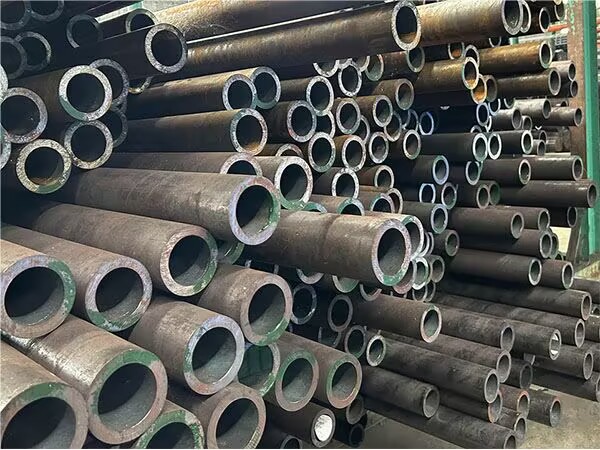Boiler tube refers to the steel with two ends open and hollow section, and its length is larger than the surrounding. The specifications of the steel pipe are expressed in terms of external dimensions (such as outer diameter or side length) and wall thickness, and the size range is very wide, from small diameter capillaries to large diameter pipes up to several meters.
Boiler tube is a kind of pipe specially used in boiler system, mainly used for conveying high temperature and high pressure water, steam or other hot media. It requires excellent heat resistance, pressure resistance, corrosion resistance and fatigue resistance to ensure long-term safe operation under high temperature and high pressure conditions.

How are boiler tubes made?
When manufacturing boiler tubes, high-quality carbon steel and low alloy steel are usually used to ensure that the steel pipe can meet the working requirements of high temperature and pressure. The selection of raw materials should comply with the provisions of relevant standards (such as API, ASTM, etc.) on chemical composition and mechanical properties.
Common forms of raw materials include ingot, billet or steel plate, which must undergo rigorous quality inspection to ensure that there are no obvious defects.
Forming process: There are two main processes for the manufacture of boiler tubes: seamless tubes and welded tubes, of which seamless tubes are more suitable for high pressure and high temperature environments.
Seamless pipe
Perforation process: The center hole is pierced from the billet or round steel to form a preliminary hollow billet.
Hot rolling or drawing: The perforated blank is expanded by hot rolling or cold drawing, further accurate to the designed outside diameter and wall thickness.
Heat treatment: In order to improve mechanical properties and eliminate residual stress generated during processing, the pipe is usually annealed, normalized or tempered to ensure that it has a high toughness and fatigue resistance during service.
Welded pipe manufacturing (generally used for low-pressure boiler tubes)
Sheet bending: The steel plate is bent into a tubular structure.
Welding molding: The use of submerged arc welding, seam welding or spiral welding technology, so that the two sides of the tube body connected into a whole.
Subsequent processing: Heat treatment and straightening after welding to eliminate the stress in the welding area and ensure the overall performance of the product.
After the boiler tube is manufactured, it is usually necessary to carry out quality control (such as tensile, impact, hardness, bending and other mechanical experiments and products) and quality testing (such as ultrasonic, eddy current and ray detection methods), through which it can check whether there are cracks, defects or other hidden dangers in the tube body and weld parts. Ensure that the boiler tube meets the design strength and elongation requirements.
The steel pipe that passes the quality inspection must also pass the water pressure test, appearance inspection and other necessary tests to ensure the safety and reliability of long-term use under high temperature and high pressure conditions.
Conclusion
As a key component in boiler system, the manufacturing process of boiler tube involves raw material selection, molding, heat treatment, testing and surface treatment. Whether it is seamless pipe or welded pipe, it needs to go through strict process control and testing to meet the operating requirements in high temperature and high pressure environments. Through continuous technological innovation and quality management, modern boiler tube products continue to improve in terms of safety, durability and economy, providing a solid guarantee for industrial boilers and heat exchange systems.
